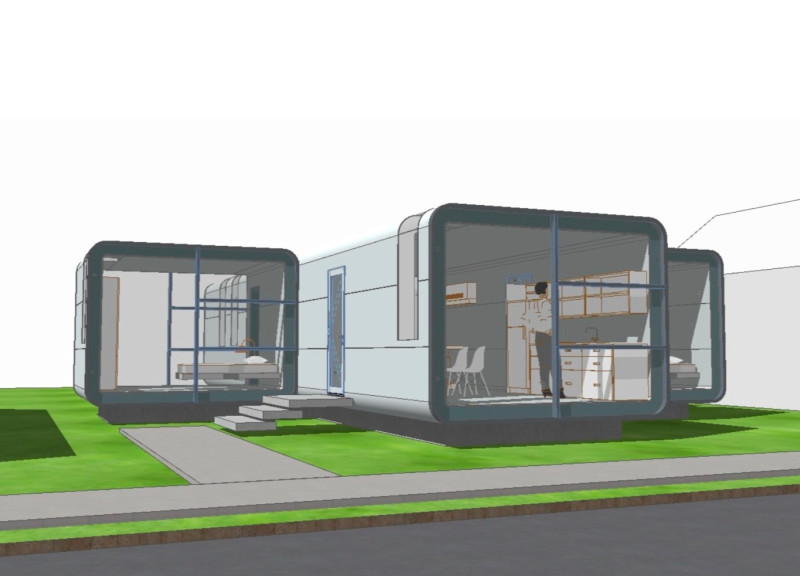5 key facts about this project
The modular home design presents a contemporary solution for residential living, focusing on flexibility and efficient use of space. Set within an adaptable framework, the layout spans 88.5 square meters, featuring distinct modules for cooking, living, sleeping, and bathing. The design concept emphasizes the idea of modularity, allowing spaces to connect while still offering privacy.
Spatial Configuration
The layout includes several interconnected pods, each catering to specific functions. Important modules consist of a kitchen and dining area, two living room spaces, a utility room, 121 bedrooms, and 11 bathrooms. This organization meets varied living needs, striking a balance between communal spaces and areas for individual retreat.
Environmental Performance
Advanced passive and active systems enhance sustainability. A rooftop solar array captures solar energy, helping to reduce reliance on outside power sources. The building has a super-insulated envelope with an R-value of 40, which minimizes energy loss. The airtight construction and high-performance triple glazing work to improve thermal efficiency. Together, these features create a comfortable indoor climate, promoting livability.
Materiality and Aesthetics
Molded fiberglass and aluminum composite are the main materials used, chosen for their durable and lightweight nature. These materials offer flexibility in design and contribute to the structure's longevity and thermal performance. The thoughtful selection of these materials reflects a commitment to sustainability, combining practicality with aesthetic appeal.
Lighting and Ventilation
The design maximizes natural light and ventilation, key aspects of a healthy living environment. Each module is positioned to optimize access to daylight, while careful placement enhances airflow. This focus on environmental integration is essential for creating a comfortable atmosphere throughout the living spaces.
The thoughtful arrangement and choice of materials culminate in an inviting living environment, where every aspect is designed to enhance comfort and usability.






















































